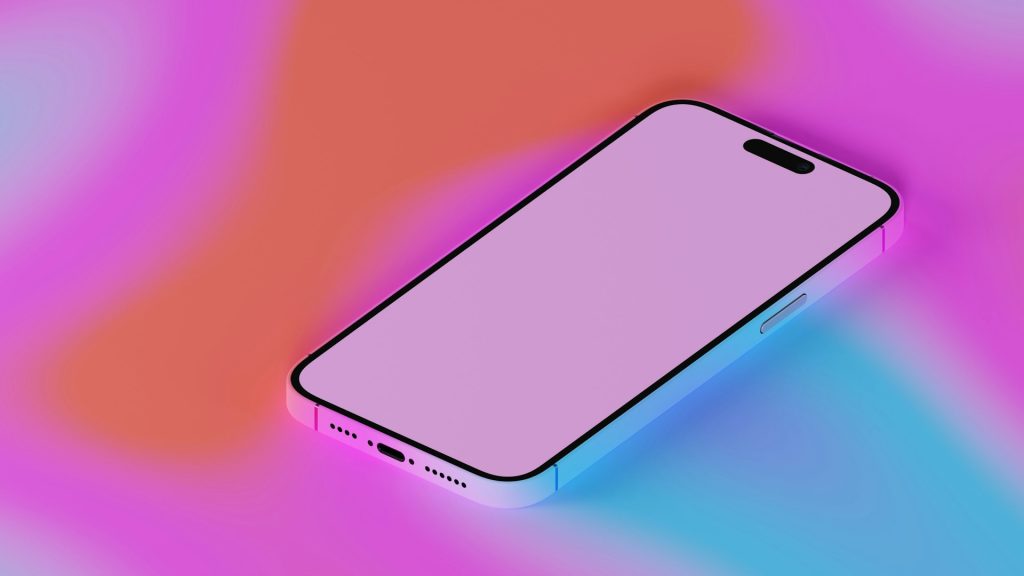Table of content
Compared to just over $1 billion in 2010, the industry received over 21 billion dollars in investments in 2020. Consumers had been using telemedicine more frequently even before the COVID-19 pandemic in 2020, which significantly enhanced the necessity for digital health products.
As more and more individuals become digitally literate, medical institutions must share healthcare information in a new, digital way. In 2020, the market for digital health was estimated to be worth over $200 billion and is anticipated to surpass $500 billion by 2024, according to recent projections. A healthcare web app may save a medical organization so much time remotely and automatically assisting and educating patients.
In this post, Devox Software will highlight the topic of healthcare web development, explaining why to build a healthcare web app in 2023 and the main healthcare web design trends. Having proven experience in creating a web app’s design and building a platform for top-notch MedTech projects, our team will reveal the essential functions, features, and development costs of operational healthcare web apps and websites.
What is a Healthcare Web App?
A healthcare web app or application is a digital solution that helps a medical organization manage and control different patient-related workflows in an automated and remote way. It is aimed to provide patients with easy and timely access to appointment scheduling, prescriptions, consultations, invoicing, healthcare education, and solving any other patients’ queries remotely and contactless.
A healthcare website development differs from a healthcare web app development by its functionality, interactive elements, and interface. Here are some healthcare web applications: Cardioline, Dickson Medical Associates, UI Health, Visual Hospital Management, and Voyager Medical.
Why Build Healthcare Web App?
Source: Aha.org
There are several major reasons to build a healthcare web app. Here are the top three of them:
- Healthcare providers have to adapt to reality in the technology-driven world and invest in medical website development. According to recent research, 61 percent of Americans use the Internet to seek health or medical information online. Furthermore, 49 percent of respondents had visited a website that offers details about a medical issue or condition.
- Healthcare web apps and websites enable the 24/7 online presence of a healthcare organization. People may require medical assistance early in the morning or middle of the night. Healthcare web apps make medical support available around the clock. It implies patients can schedule appointments, get information, and receive consultations online without visiting the hospital.
- Healthcare web apps and websites help medical providers stay competitive in the market. Medical web apps and websites help meet patients’ requirements more effectively, affordably, or both in comparison to the offline services of their competitors. Good online presence and accessibility incline many potential clients to choose a particular healthcare provider.
Main Functions of Medical Web Apps and Websites
Let’s speak about the function a medical web app or website can offer your patients before delving deeply into the specifics of healthcare website design. The significance of each function may change depending on the specific circumstances, but it is imperative to be aware of them all.
- Automation of administrative processes. Online paperwork, digital medication ordering, and automated scheduling can help you save money, time, and even the lives of your patients.
- Patient-doctor communication. Email, setting up this connection via the user portal, live chat, video conferencing, or using a direct form on the website are all ways to link patients and their doctors. By incorporating a “Ask a doctor” function, patients are encouraged to communicate online, which can reduce the number of in-person appointments while still meeting their needs.
- Clinical decisions support. You or your doctors can access various databases through web-based clinical decision support systems. You can lessen the likelihood of future medical mishaps by keeping this function in mind as you create the medical website.
- Your patients’ education. You can provide information and your own ideas on treatments, disease prevention, risk factors, and treatment cost reduction to enhance the way your patient is being treated.
Now let’s look at these main functions in more detail, highlighting subfunctions and features that your patients are most likely to search for in your healthcare web app.
Healthcare Web Design Trends in 2022
Speaking about healthcare web design trends in 2022, we should consider some general web design trends of the year, such as the use of daring and bright colors and classic fonts, as well as the trends inherent exclusively to the healthcare industry. Let’s talk about some of the latter in detail.
Source: Nuanced Media
- Trend #1: Simplicity of the navigation menu. Base the web design of the healthcare web app or website on no more than two web-friendly fonts or font styles and complementary yet well-contrasted colors. This suggestion will help your calls to action stand out more and help you reach out to more clients or achieve any other of your business goals.
- Trend #2: Your healthcare web app or website accessibility. When developing a medical web app, ensure it’s accessible to those with disabilities so they can use it without difficulty. It entails a text resize option, voice readers, podcast transcripts in text, HTML tags and captions, color contrast, and alternative text for photos. Visit the ADA compliance checklist for additional details on accessible web design for healthcare.
- Trend #3: Data visualization. Visualization of data in an educational, aesthetically pleasing, and well-designed manner is one of the ways you can set yourself apart from other healthcare websites. It is vital to display the test results and the treatment’s dynamic. Visualize only content that will benefit your patients. Add a user-friendly description to all the graphs and charts.
How to Develop a Cutting-Edge Healthcare Web App?
There are various approaches to healthcare web app development. At Devox Software, we have developed an optimal healthcare development process through our experience and expertise. Healthcare web app development at Dexov Software consists of the following phases:
- Discovery phase
- Design phase
- Development and testing phase
- Launch and improvement phase
Discovery phase
First of all, it is vital to decide which kind of healthcare web app you want to develop to be able to communicate it to the development team. The cost of development of each type of web application will vary greatly. This further influences decisions on the development team members, the schedule for designing and developing a website, and the final cost.
During the discovery phase, the client must understand what problem they want to solve with their healthcare web app and if there is a demand for such a solution. The discovery phase includes customer analysis, identifying the client’s pain, market analysis, and competitor analysis. Once these steps are done, a preliminary design layout and ready-made plan should be developed.
Design phase
The design phase weighs a lot in healthcare web development. A competent UX&UI designer should be hired to handle both tasks. Websites for the healthcare industry must adhere to a specified design so that visitors may quickly browse and locate the information they need. The UX/UI design of the medical website or application must be uncomplicated, responsive, and strongly emphasize features that support medical and healthcare functioning.
Development and testing phase
There are two parts to the development process: frontend and backend. The technology stack you choose for both impacts the development process’s speed, quality, scalability, and cost. A technological stack is a grouping of the frameworks, programming languages, and medical software needed to create a healthcare web application.
Every healthcare web app must adhere to all HIPAA rules that guarantee the security of patients. You require a website that complies with HIPAA if you receive, manage, create, or transfer ePHI. If you collect data using forms, you must follow HIPAA regulations to protect the information. HIPAA helps to prevent illegal access or future data breaches by protecting personal data. Devox Software has created UX/UI for web and tablet applications and developed the platform for a MedTech project Nabed. Our team has chosen technologies such as Angular, .NET Core, Docker, and AWS to develop this healthcare web app. As the project was long-lasting, a dedicated team worked on the project for about six months.
Launch and improvement phase
The Healthcare web app development process doesn’t end in the development phase itself. The last stage of the project is product launch and improvement. It comes after all the time and work we put into discovery, testing, designing, and development. Typically, the most significant insights come to light right before launch: what analytics and functional features can we add to the app to improve it in the subsequent versions?
Devox Software’s dedicated development team continued to maintain and improve Naved’s healthcare web and tablet app after the launch to ensure the quality of the app’s performance.
Features of a Healthcare Web App
The list of features depends on the specifics and niche of a particular healthcare web app or website. However, let’s consider the most distinctive features typical for the online healthcare industry.
How Much Does It Cost to Develop a Healthcare Web App?
Developing a healthcare web app will always cost differently depending on the type, complexity, amount of features, programming language, team size, location, and other aspects. A healthcare website cost with an entire backend architecture and a design may be estimated at about $100,000 on average. Below, you can find an approximate healthcare web app development estimate.
The range may be broad because each client has unique needs and requires a different number of team members to complete a project. The budget should also account for maintenance and after-release support because any healthcare web app requires frequent upgrades and improvements after the launch.
Feel free to contact Devox Software for web development services if you want to get an estimate for your healthcare web solution.
Designing a Medical Web App: Important Factors
Above we have already discussed the trends of web design in general and in healthcare web development in particular. In this section, we would like to highlight some major beyond-time factors to consider when designing a healthcare web app. Below are the key considerations that will influence not how your healthcare web app will look but how it will function.
- HIPAA and HITECH compliance. Every supplier of medical services works with protected health information (PHI). PHI is protected by HIPAA laws and contains information about medical services. HIPAA is given even more protection by the Health Information Technology for Economic and Clinical Health Act (HITECH), which also offers several advantages to patients. Patients can obtain protected health information online as one of these advantages.
- Privacy policies. A privacy policy is vital for healthcare websites since they handle a lot of sensitive data. This policy ought to be available to all users and contain details on the kinds of data you gather, the tools you employ, and the methods you use to process, encrypt, and safeguard that data. It makes sense to work with a lawyer to correctly write this document, especially if your medical web app is designed for use in the European Union country and must comply with GDPR.
- SSL certificate. Having an SSL certificate and using HTTPS are requirements whether or not your medical web app provides services online. This is necessary to guarantee a secure connection to the server and appropriate data encryption. Depending on the level of protection and the number of domains you need this certificate for, the pricing range may change.
- Fast loading and responsiveness. Users now anticipate websites to load in under two seconds. According to a Google-commissioned study, cutting mobile web page load times by only a tenth of a second led to up to 10 percent higher conversion rates. In addition, the web app’s responsiveness is no longer an option. It is a must to prevent your visitors from leaving the platform.
Develop a Game-Changing Healthcare Web App with Devox Software
The treatment of patients is ultimately the highest virtue of healthcare. Healthcare providers already realize the ability of the internet to provide better, more efficient care through innovative and user-friendly solutions. Healthcare web apps and websites are no longer rare experiments but centerpieces for any healthcare provider’s mission and day-to-day functionality.
Devox Software can assist in developing the right healthcare web app at a fair price. Our staff will help you select the most practical option based on your desired healthcare web app features and business goals. You can check our web development services to see our expertise and make sure we know how to execute your healthcare web solution development seamlessly.

















